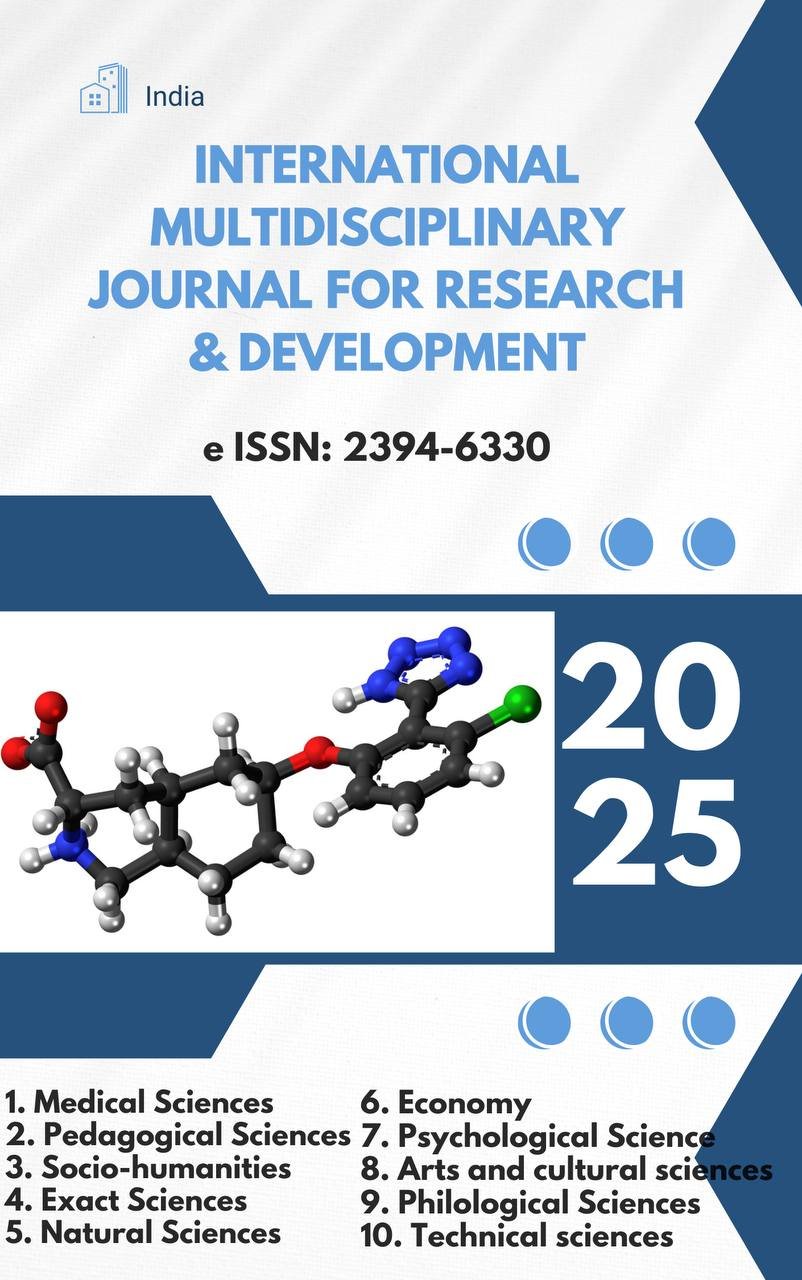MEDIALINGUISTIC AS A NEW DIRECTION IN LEARNING THE LANGUAGE OF THE MASS MEDIA

Abstract
The growth of mass media - radio, television, the emergence of new information technologies, the development of the Internet - all this does not leave its influence on the creation and distribution of the word. Most of the use of speech today is in the field of mass communication. This prompted the emergence of a new term "medialinguistics - mass media language" in modern linguistics. The study of this term in modern linguistics has become one of the topical issues of linguistics. The solution to this problem was first opened in 1899 at the Faculty of Philology at Moscow State University.
Keywords
mass media, radio, newspaper, magazine, media, linguistic, structure.
References
- X.Xamidova “Medialingvistika novaya paradigma v izuchenii yazika SMI”/gumanitar fanlar 1-son (789)/2018-yil.
- Rizaeva, K. R. (2014). Economic Development of Uzbekistan: Export Promotion Policies in the condition of the global financial-economic crisis. Europaische Fachhochschule, (3), 162-165.
- Shuxratovna, R. K. (2024, April). STABILITY OF MEDIADISCURS IN ENGLISH AND UZBEK. In International Global Conference (Vol. 1, No. 3, pp. 137-139).
- Shuxratovna, R. K. (2024). Mediadiskurs Tools in English and Uzbek. EUROPEAN JOURNAL OF INNOVATION IN NONFORMAL EDUCATION, 4(4), 125-126.
- Rizayeva, K. S. (2020). GAMES AND GAME ACTIVITIES IN ENGLISH LESSONS FOR THE DEVELOPMENT OF STUDENTS COMMUNICATION SKILLS. Theoretical & Applied Science, (2), 721-723.
- Umurzaqov A.M. Ijtimoiy reklamalar jamoatchilik fikrini shakllantirish vositasi sifatida// NamDU ilmiy axborotnomasi, 2018. 4–son
- Azamatovna, B. S., & Salijanovna, I. S. (2020). Classification of could words in german and Uzbek. PalArch's Journal of Archaeology of Egypt/Egyptology, 17(6), 7333-7339.
- Bekmuratova, S. A. (2019). GRAMMATIC FEATURES OF DOUBLE WORDS IN GERMAN AND UZBEK LANGUAGES. Scientific and Technical Journal of Namangan Institute of Engineering and Technology, 1(5), 248-252.
- Azamatovna B. S., Salijanovna I. S. Classification of could words in german and Uzbek //PalArch's Journal of Archaeology of Egypt/Egyptology. – 2020. – Т. 17. – №. 6. – С. 7333-7339.
- Bekmurotova S. NEMIS VA OʻZBEK TILLARIDA JUFT SOʻZLARNING SEMANTIK ASPEKTIDA LINGVOKUTUROLOGIK XUSUSIYATLAR //Science and innovation in the education system. – 2024. – Т. 3. – №. 3. – С. 222-227.
- Imyaminova S. НЕМИС ТИЛИ ФРАЗЕОЛОГИЯСИДА ТЕРМИНОЛОГИК БЕТАРТИБЛИК МАСАЛАСИ //Science and innovation. – 2022. – Т. 1. – №. B5. – С. 193-198.
- Shukhratkhon I., Bekmurotova S. Grammar and stylistic characteristics of pair words in modern german and Uzbek languages //ACADEMICIA: An International Multidisciplinary Research Journal. – 2021. – Т. 11. – №. 10. – С. 1953-1956.
- Shukhratkhon I., Bekmurotova S. Structural-Semantical Features of Pair Words in Modern German and Uzbek Languages //Turkish Online Journal of Qualitative Inquiry. – 2021. – Т. 12. – №. 9.
- Azamatovna B. S. PAIRS OF WORDS AND THEIR SEMANTIC ANALYSIS IN ARTISTIC TEXTS IN GERMAN AND UZBEK LANGUAGES //International Global Conference. – 2024. – Т. 1. – №. 1. – С. 169-173.
- Bekmurotova S. NEMIS VA OʻZBEK TILLARIDA JUFT SOʻZLARNING SEMANTIK ASPEKTIDA LINGVOKUTUROLOGIK XUSUSIYATLAR //Science and innovation in the education system. – 2024. – Т. 3. – №. 3. – С. 222-227.
Downloads
Download data is not yet available.